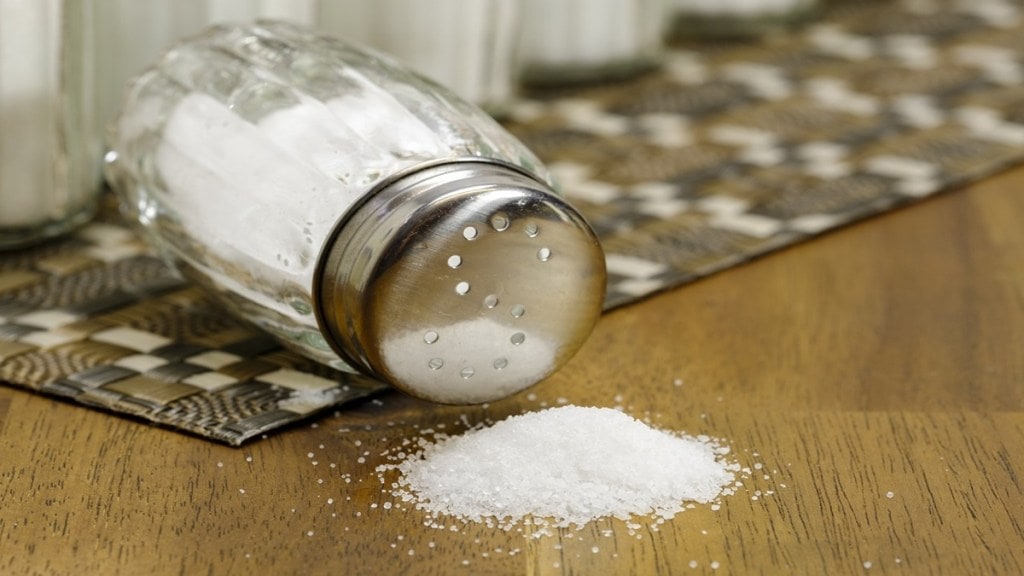The World Health Organization (WHO) recently release new guidelines that revealed that K-salt or potassium chloride may reduce the consumption of sodium which will decrease the risk of chronic conditions like hypertension.
Some evidence suggest that K salts can reduce sodium content in foods by about 30 per cent without compromising on taste. “To reduce blood pressure and risk of cardiovascular diseases, WHO has recommended reducing sodium intake to less than 2 g/day (strong recommendation).19 In this context, using less regular table salt is an important part of an overall sodium reduction strategy. If choosing to use table salt, WHO suggests replacing regular table salt with lower-sodium salt substitutes that contain potassium (conditional recommendation).21 This recommendation is intended for adults (not pregnant women
or children) in general populations, excluding individuals with kidney impairments or with other circumstances or conditions that might compromise potassium excretion,” WHO said in its guidelines.
WHO’s new dietary guidelines suggest replacing regular table salt with potassium-enriched alternatives that reduce sodium levels without compromising taste. According to WHO, these substitutes, which combine potassium chloride, magnesium sulphate, and calcium chloride, are already available in global markets under brands such as LoSalt, Nu-Salt, Morton Lite Salt, and Pansalt.
The UN health body has also urged governments to facilitate greater adoption of low‐sodium salt substitutes (LSSS) by making them more accessible and affordable. As India struggle with the burden of cardiovascular diseases, the need to decrease sodium consumptions is crucial. Following the WHO announcement, health experts applauded the UN Health body for its new guidelines.
The George Institute for Global Health India on Wednesday issued a statement hailing WHO’s recommendation to replace regular table salt with potassium-enriched, lower-sodium salt substitutes.
“Recent research by The George Institute for Global Health India, in collaboration with PGIMER Chandigarh, highlights the urgent need for dietary changes in India. The study revealed that excessive salt consumption far exceeds recommended levels, while potassium intake is critically low—key contributors to the growing prevalence of hypertension, cardiovascular disease, and chronic kidney disease. These findings are part of a broader initiative to understand India’s dietary landscape and its impact on non-communicable diseases (NCDs), the institute stated.
It also emphasised that the guidelines highlight the potential of these salts to save millions of lives, particularly in countries like India, where sodium intake is high, and potassium consumption remains critically low.
“To fight the growing problem of hypertension and heart and kidney disease in India, especially in rural areas, we need to make the low-sodium, potassium-enriched salts affordable and easily available. By working with policymakers and the food industry, and by educating people about their benefits with clear labeling and subsidies, we can encourage their use, save lives, and tackle India’s high salt intake for a healthier future,” Prof. Vivekanand Jha, Executive Director, The George Institute for Global Health India said.
What are K-salts?
Interestingly, K-Salts not only brings out sodium consumptions, it also increases the intake of potassium. Studies suggest that potassium consumption, even in isolation, can significantly reduce blood pressure.
Normal table salt contains sodium chloride. The K-salts or potassium-based substitutes replace the sodium chloride with potassium chloride. Potassium intake mainly happens from foods such as beans, peas, nuts, vegetables such as spinach and cabbage, and fruits such as bananas and papaya.
What are the benefits of K-salts?
Prof Jha also emphasised the need to generate evidence on the safety and efficacy of salt substitutes in special populations, such as those with kidney diseases.
The Salt Substitute in India Study (SSiIS) underscores the promise of reduced-sodium, added-potassium salt substitutes in lowering blood pressure among rural Indian hypertensive patients. Baseline data from the study revealed excessive sodium intake, with average urinary salt excretion at 10.4 g/day—more than double the WHO’s recommended intake. The trial demonstrated that the use of salt substitutes is a practical, effective intervention for managing hypertension in high-risk populations, providing a cost-efficient solution to a pressing public health issue.
This study by Sudhir Raj Thout, a Research Fellow at The George Institute for Global Health India, focused on 502 hypertensive participants from rural India and further affirmed the benefits of potassium-enriched salts. Participants using reduced-sodium, added-potassium salt substitutes for three months experienced significant reductions in systolic blood pressure (4.6 mmHg) and diastolic blood pressure (1.1 mmHg) compared to those consuming regular salt. Additionally, the substitutes improved urinary potassium levels and the sodium-to-potassium ratio, while participants reported regular use and found the taste acceptable. This highlights the feasibility and effectiveness of adopting salt substitutes as a low-cost intervention in rural settings to combat hypertension.
“The WHO’s recommendations and guidance on use of lower-sodium salt substitutes are particularly important for India in lowering the blood pressure and cardiovascular risk, given the current high prevalence of excess sodium intake. This recommendation on the use of lower sodium salt substitutes supports widespread use, as a healthy alternative to regular table salt that provides obvious benefits for blood pressure and heart health,” Sudhir Raj Thout, Research Fellow at The George Institute for Global Health India, said.
Global and Indian studies demonstrate the effectiveness of potassium-enriched salts in reducing blood pressure without compromising taste, making them an accessible intervention for most populations. While individuals with advanced kidney disease should avoid these substitutes, they are safe and effective for the vast majority, it added.

